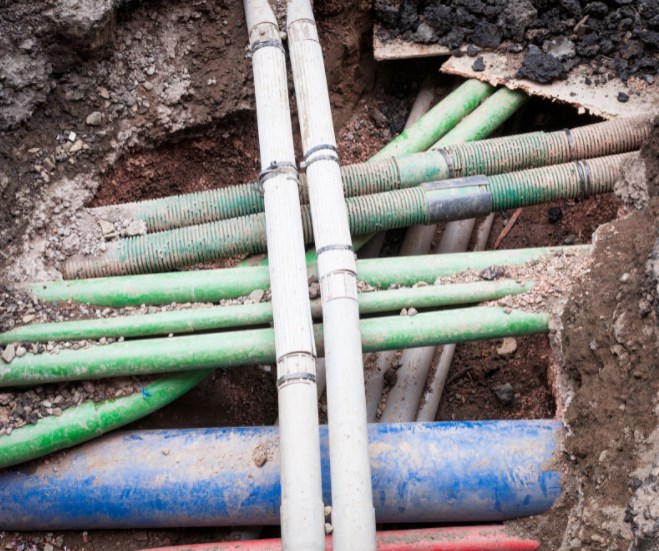GPR Detection of Underground Pipes

What is GPR?
Ground-penetrating radar (GPR) is a frequently used geophysical location method. Using radiofrequency waves, this method generates images of the subsurface that enable us to pinpoint the precise location of underground utilities, wastewater storage tanks and many other phenomena.
Using radio frequencies in the microwave band, this non-destructive method locates reflected signals after their interaction with underground structures or variations in soil composition.
Why use georadar for underground infrastructure detection?
Georadar is used to detect underground infrastructures because of its accuracy, its non-destructive method, its versatility for different types of soil, its speed in analyzing and its significant contribution to the safety of construction and excavation operations.
Thanks to the use of radio-frequency waves, it enables precise service location of water pipes, electrical cables, gas pipes, wastewater storage tanks and similar infrastructures, without causing physical damage to surfaces.
This reduces the risk of accidents, avoids disruption to utilities and enables rapid surveys with real-time results. Georadar is therefore an essential tool for ensuring the safety and efficiency of projects involving underground work.

What are the risks of failing to detect underground infrastructures?
Failure to properly detect and locate pipes can lead to a number of risks and negative consequences:
-Property damage
-Safety risks
-Service interruptions
-Additional costs
It is therefore essential to carry out proper underground infrastructure detection prior to any excavation or construction work, in order to minimize risks, ensure personal safety and reduce disruption and any unnecessary costs.
The importance of accurately locating underground services for construction safety
The precise location of underground services is of paramount importance to construction safety. Precise knowledge of the location of cables, pipes, water mains, gas mains, power cables and other underground infrastructure helps to avoid serious accidents such as burst pipes, gas leaks or power cuts.
This prevents risks to workers on site and to the surrounding public, while avoiding high repair costs, project delays and litigation is linked to damage to underground services. Precise location of underground services thus enables proper planning, safe execution and successful delivery of construction projects.
Why choose Georadar Detection for underground pipe detection?
As a specialized and experienced company, Géoradar Détection provides high-quality services with remarkable precision. Using state-of-the-art equipment, where they can locate conduits and detect underground tank accurately and non-destructively, preserving surrounding surfaces.
Safety is a top priority for Georadar Detection, ensuring that rigorous safety measures are in place to protect workers and the public. When you choose Georadar Detection, you benefit from professional expertise, advanced technologies and a commitment to safety, ensuring safe and reliable detection of underground conduits for your construction projects.
